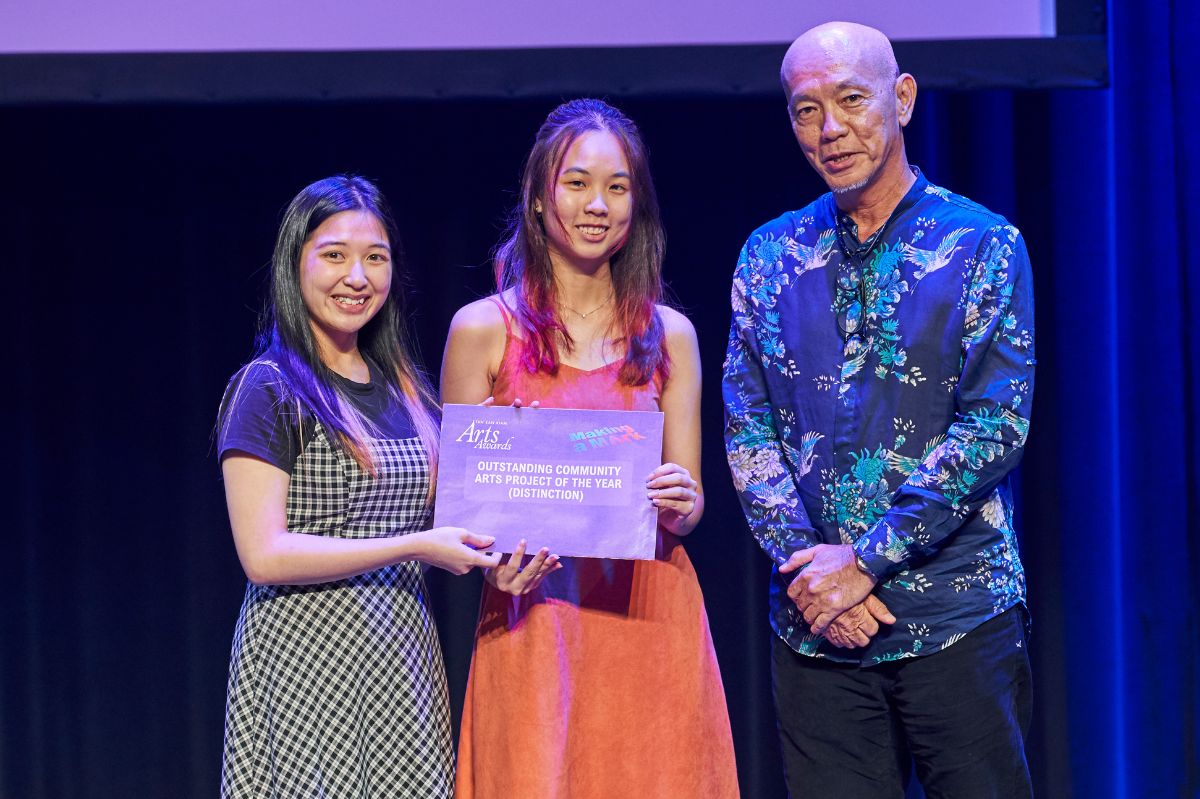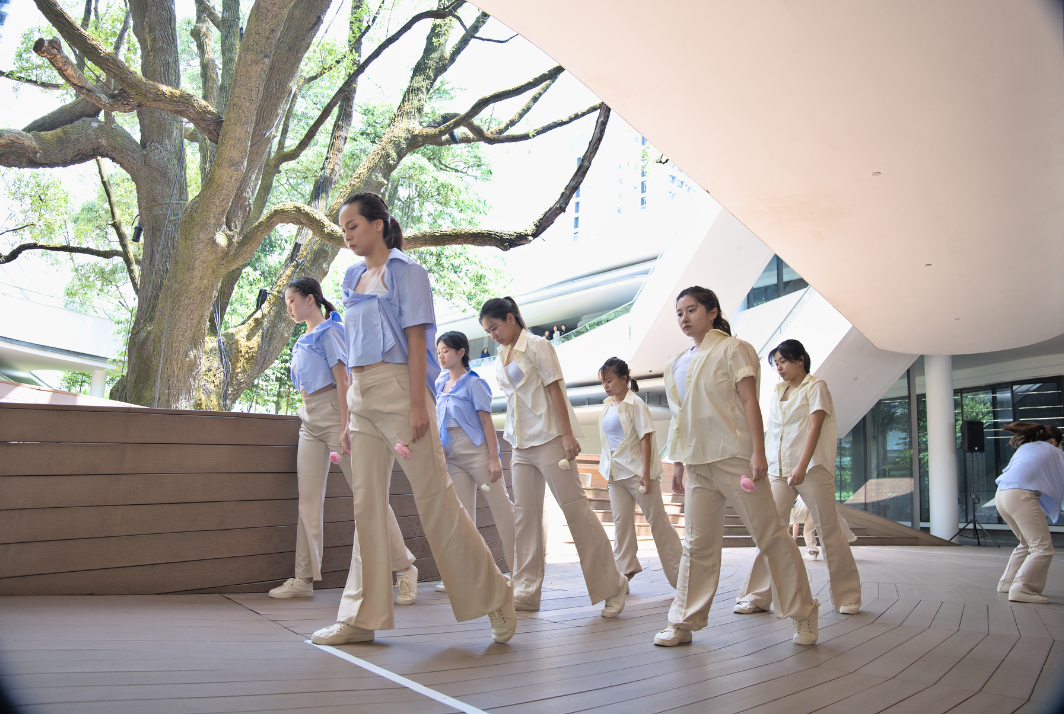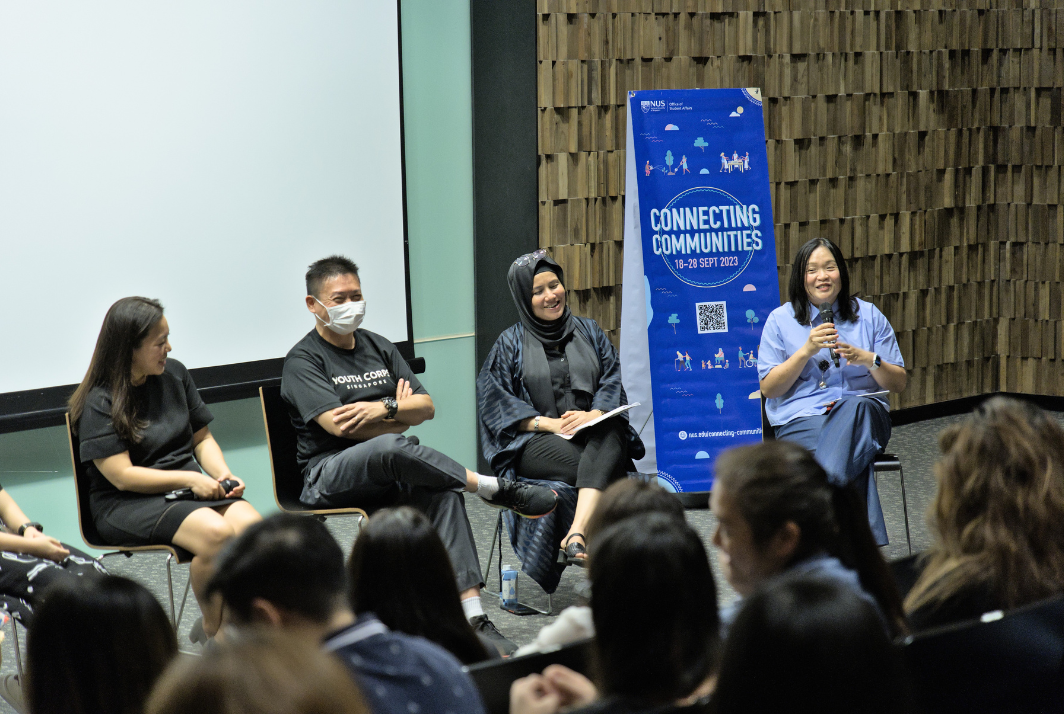Most student art group missions focus on artistry. NUS Dance Synergy’s mission is special, as it contains an additional aspiration -- to win hearts as a socially conscious arts group. And indeed they have, with their recent victory at the Tan Ean Kiam Arts Awards, where they received the Distinction Award for Outstanding Community Arts Project of the Year. Their winning project, Moving Hands, Helping Bodies 3.0 was a community dance initiative where they collaborated with beneficiaries such as Anglican Senior Centre and NTUC Health Senior Activity Centre to promote active aging and inspire meaningful intergenerational interaction through the arts.
OSA spoke to Leong Qian Ning, a fourth-year Psychology student at Faculty of Arts and Social Sciences, who was NUS Dance Synergy’s Co-Community Outreach and Engagement Head in AY22/23 to learn more.

Congrats on NUS Dance Synergy’s Distinction Award at the Tan Ean Kiam Arts Awards! What was your group’s first reaction when you heard about the nomination?
Qian Ning: We were very honoured and excited to have been nominated for the award. We are also very grateful to have our efforts recognised with this award. It serves to remind us why we are doing it in the first place.
Could you share what your project, Moving Hands, Helping Bodies 3.0 is about?
Qian Ning: In this project, NUS Dance Synergy students learn about the theories of the body and how to conduct dance workshops safely to senior citizens over the course of four weeks. The students then apply what they learnt and guide the seniors in simple exercises and choreography.

Who was the first to moot the idea of this community arts project, and what was the inspiration behind it?
Qian Ning: It was started by NUS Dance Synergy’s 42nd batch of Community Outreach and Engagement Heads, Vera and Shaelyn during AY2020/2021. It started with the idea of giving back to the community through a more cohesive programme, where NUS Dance Synergy students not only execute the workshops, but also gain greater appreciation of the project’s intent through the application of dance theories.
The project is at its third edition. How has it evolved over the years? What can we expect for the next cycle?
Qian Ning: It has definitely become more refined over the years in terms of its structure and goals. In the next cycle, we will be reintroducing Design-Your-Own-Module (DYOM) initiative back into our project structure, and take a more focused approach in working with the elderly. This means we will devise ways on how to address the needs of specific groups of elderly such as elderly with dementia or less able-bodied elderly.
What are some key takeaways the team has learnt from being involved in the project?
Qian Ning: We learnt that we should always be prepared for setbacks and be ready to improvise on the spot, if and when they happen. We also learnt the importance of adapting our content to suit what the seniors want and need from the workshops.
Besides the project you were nominated for, NUS Dance Synergy is also active in other CSPs throughout the year. Why is CSP such an integral part of your group’s mission or identity?
Qian Ning: People in NUS Dance Synergy really love our art form, and we just want to spread that joy to others and give back to the community. We would like to remind others that everybody can enjoy dance, and it does not matter what our backgrounds are.

How would you encourage your peers from other arts groups who may be keen to embark on CSPs like yours?
Qian Ning: I would tell them about the joy I felt teaching the seniors our exercises and choreography. Seeing the seniors having fun and enjoying the workshops honestly makes it so rewarding. Not forgetting the fun I had working together with my groupmates in brainstorming original choreography. I had a very good time overall.

The photos in this article are published with permission from the beneficiaries. Besides NUS Dance Synergy, click here to find out who the other award recipients from the Tan Ean Kiam Arts Awards were.
Share:
Contributor
Office of Student Affairs



